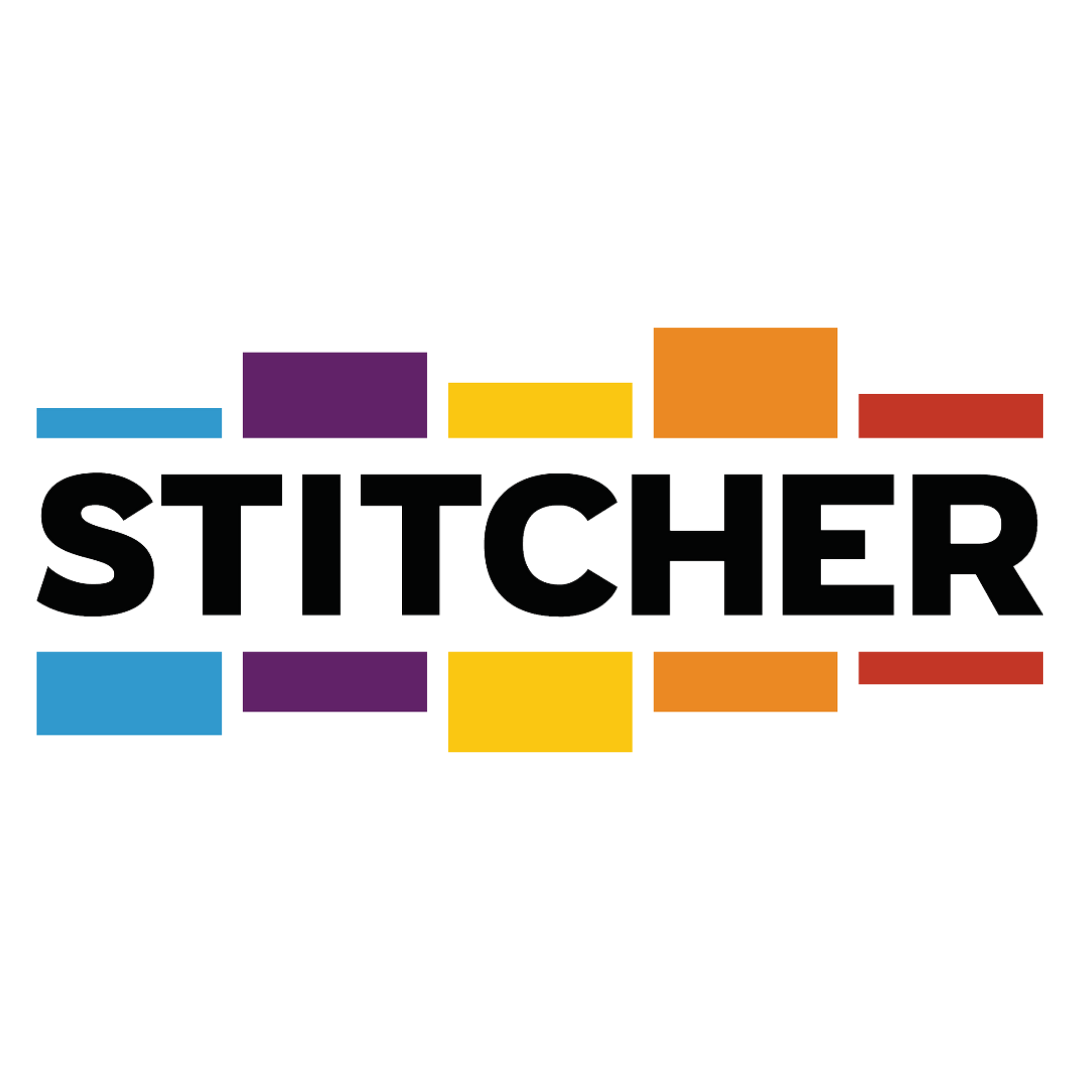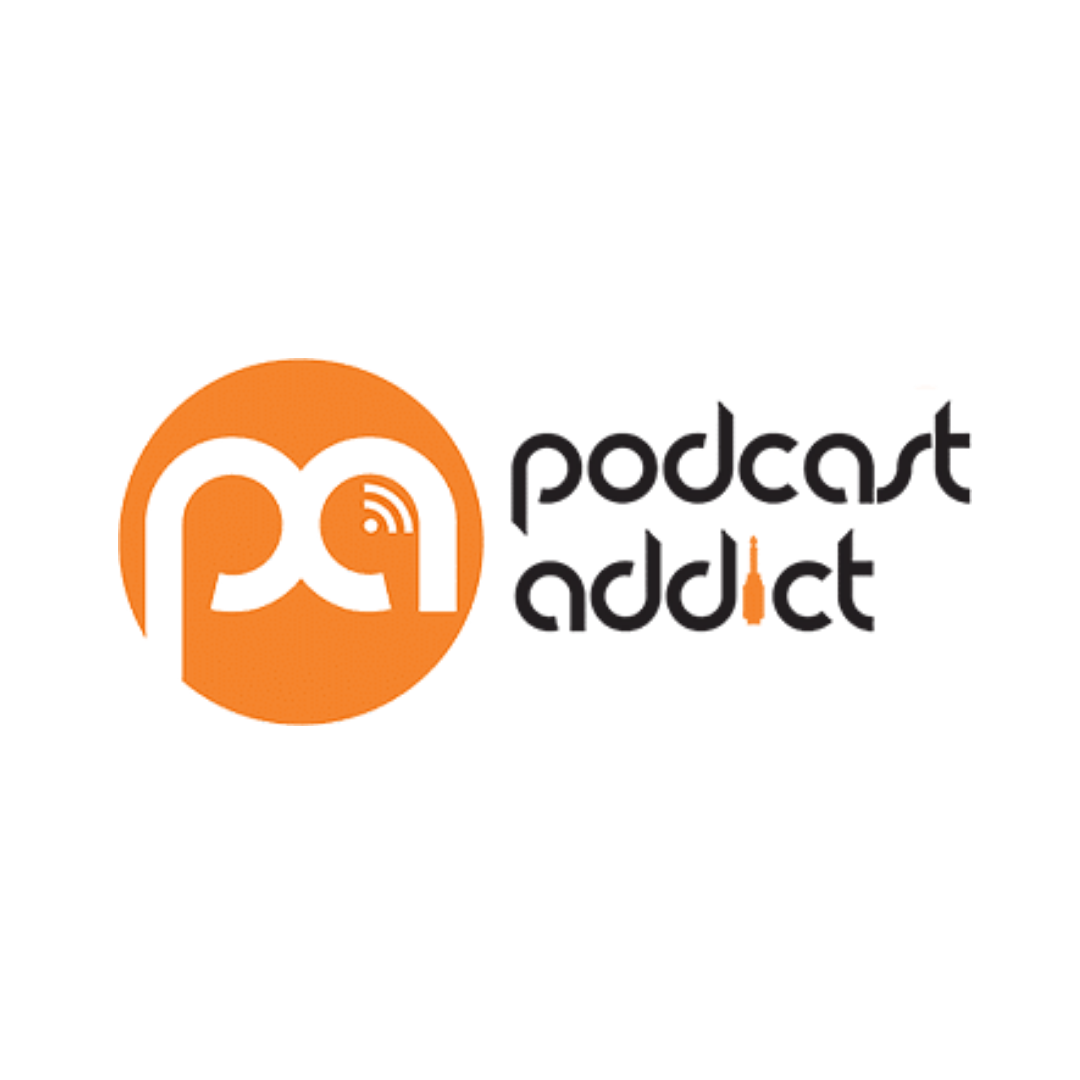Sales Differentiation Strategy
Join Our Newsletter
Introduction
Lee Salz is the Founder and CEO of Sales Architects where he helps clients develop processes to hire the right salespeople, effectively onboard them and align their sales activities with business objectives.
Show Notes
In this episode, we talk about differentiation, Lee shares his insights on two types of differentiation which are marketing differentiation and sales differentiation. He also shares why the word "unique" is one of the biggest causes of frustration in sales. This episode covers:
- Why is it important to differentiate
- What does a business need to do to differentiate itself and what examples
- Why the word "unique" is one of the biggest causes of frustration in sales
- Two types of differentiation — marketing differentiation and sales differentiation
- How to perceive meaningful value in what you're selling through an ideal client profile
- How some buyers don't see an objection to prices and value a product intrinsically
- How to work out who your target buyer is
Linkedin: Lee Salz
Twitter: @SalesArchitects
Free tool: Target Client Profile Template
Books: Sell Different! & Sales Differentiation
salesarchitects.com
Valuable Resources:
Brand Tuned Scorecard
Brand Tuned Accelerator
www.brandtuned.com
Transcript
Lee Salz: We should be qualifying against is our target client profile. Is there a fit? Too often salespeople waste way too much time pursuing deals that they are never going to win at the prices that they want because it doesn't align with that target client profile.
Shireen Smith: Hello, and welcome to the Brand Tuned podcast hosted by me Shireen Smith, IP lawyer, marketer, and author of brand tuned. The podcast focuses on how to design brands, avoiding commoditization, and intersecting with intellectual property during the creation process.
My guest today is Lee Salz, a sales management strategist and founder of the Sales Architect. He conducts customized workshops on sales performance topics like Salesforce development, hiring, onboarding, and compensation. He's written many best selling books, his sixth one being Sell Different, which was published by HarperCollins. In September 2021. It outlines new sales differentiation strategies, to outsmart outmaneuver and outsell the competition, and was finalist for top sales book of 2021. Hello, Lee, and welcome to the Brand Tuned podcast.
Lee Salz: Shireen nice to meet you.
Shireen Smith: So, I'd like to begin this by asking you what you how you would define differentiation.
Lee Salz: That's one of my favorite topics. Thank you for asking. You know, most of the time, when I talk with executives about the subject of differentiation, their minds go one place marketing, and they're not wrong. They're just limited in their beliefs. I believe there's two types of differentiation. There's marketing differentiation, and their sales differentiation. And they're related, but they're also different. So marketing differentiation is one directional communication for the masses. It says, Hey, look at me, we're here. Right? That's what a tradeshow booth does. All the collateral materials that are produced, the website lays out all the potential of what could be sales differentiation is to directional communication with an individual, everyone buys for a different reason. Sales differentiation gives us the tools to take all the potential of what could be and narrow it down to what should be for this individual in this circumstance. So they're very, very different, but they're also related.
Shireen Smith: Right? So why is it important to differentiate?
Lee Salz: There's an expression that I've trademarked here, it's win more deals at the prices you want. And that's the fundamental purpose, in the absence of differentiation, price is going to win the day. And unless you're the low price provider, and even that doesn't guarantee that you're gonna win the deal. That's, that's terrible news. So if you're not differentiating yourself in a meaningful way, and that word meaningful is so important. A lot of times we try to differentiate, but we don't ask ourselves the question, is this meaningful? So for example, if I came into our interview today, wearing my wife's beach hat, and a funny shirt, it would certainly be different. I'm sure you've never had a guest come on dressed that way. But would that be meaningful for our audience? And of course, the answer is no. And while that's a fun, silly example, a lot of times, companies like to talk about certain awards, they've won. And they just toss them out, and they expect it to be meaningful. And the reality is, it makes us feel good as the ones that won the awards. But it's not necessarily meaningful to the people that we're interacting with. Unless we position that a lot of times what I see when it comes to sales differentiation strategy is that salespeople toss out differentiators and leave it for the other person to decide how to feel about that. So we're the biggest like to throw that one out. That's it. That's what salespeople like talking about with the biggest and they just leave it out there for someone to decide, okay, is that a good thing or a bad thing? And when they do that, what if two really bad things happens either the person on the other side of the desk never figures out why it matters, or they give it a meaning. That's not going to help the sale. So if you just toss out there just happens all the time, we're the biggest in the space.
And they leave it there. And here's what the other person on the other side of the desk could be thinking, Oh, they're the biggest. So that means I get to be a number. I'm not excited about that I don't want to work with a company, it doesn't make me feel special. And if we don't position, why that matters with a biggest, which means we have the most buying power, which allows us to reduce costs for our clients. Now, our buyers happy. But they would never derive on their own, why that be advantageous to them.
Shireen Smith: So do you need to be unique? What does a business need to do to differentiate itself? Can you give some examples.
Lee Salz: Absolutely, you will not find the word unique in any of my books. The word unique is one of the biggest causes of frustrations in sales. Because salespeople look for this holy grail, this one little nugget, that as soon as they say it, the checkbooks just gonna pop open. And it's almost never something that a company possesses that this one little thing that no one else in the industry has. And what what I work with clients to do is to develop their aggregate differentiated story, where it's not one little thing, that they're able to tell a story in a way that no one else could tell, or position in the exact same way. So it's not one little thing. It's the aggregate of all these different things that we provide, that leads to the development of a solution that you won't experience anywhere else.
Shireen Smith: Do you have some examples of?
Lee Salz: Absolutely. Every day, I work with organizations in developing their sales differentiation strategy. And we go through a lot of introspective exercises. So for example, if you go through a competitor analysis, and you take two sides of a ledger, why you win, why they win and price can't be on either side of the ledger, then you look at the individuals that you're selling to I call those decision influencers, again, two sides of a ledger, what's keeping them awake at night that you could address? And on the right side? How can you help them with each one of those. And if you take those two exercises, why you win, and how you can help you wind up with a laundry list of ways that you're able to differentiate yourself in a meaningful way. And you put that together in an aggregate that you then develop a communication strategy around to be able to position your story in a compelling fashion.
Shireen Smith: Okay, so say you've got a patented innovation. Yeah. And you are offering I don't know, it could be any, anyone who's had a patent like Dyson, who had a patent for the, for those bagless vacuum cleaners. So how does the sales differentiation tie into that?
Lee Salz: Right? So a patent, by definition, means that you have something that unique, but patents expire? Yeah, right. That's how we get generic drugs. And so when we look at a situation where something is unique, and you have a patent, you may have a patent for something, it doesn't mean it's the only way that a solution can be crafted. And a patent doesn't necessarily mean it's the right thing, or the best thing for me to have as the buyer. So if you have a patent, you still have to position why this is meaningful, why it's significant. And if you aren't the ones that have the patents, you have to develop your own solution and a strategy to explain why your solution is a superior alternative to what the buyer can get.
Shireen Smith: So doesn't this depend on the buyer, in terms of having the right buyer for your differentiation?
Lee Salz: Absolutely. So there's a concept that I talked about in both of those books, which is a target client profile, Shireen. Does your audience like free things?
Shireen Smith: Does they've what do they do?
Lee Salz: Does your audience our listeners, do they enjoy free things?
Shireen Smith: Free things? And I'm sure they agree. Yes.
Lee Salz: Well, I actually have developed a tool that they can download to create a target client profile and I'll explain what that is in a moment. But that URL is going to be very difficult to remember its targetclientprofile.com.
Shireen Smith: Okay, we'll be sure to add that to the show notes.
Lee Salz: Perfect. Now, our listeners are probably accustomed to the expression ideal client profile. And I think an ideal client profile was such a mistake for salespeople to have. And here's why. An ideal client profile says, this is the type of business, if we could ever find it, we'd love to have, it's almost like a lottery ticket, it's a one in a million chance. A target client profile says, This is what we perceive meaningful value in what we're selling. And in that worksheet, there are nine components that help you to gain clarity on who those right people are. And the better you have that clarity, you're able to wisely invest every sales minute in the pursuit of those. So for example, one of the challenges that I see so often in sales is the price issue. Right, price always becomes an issue. And the most common reason why salespeople say this issue comes up is that it's the buyers fault. They don't perceive meaningful value, we place all the blame on them. But it's our responsibility. And what I find so often when I work with clients and look at their, their win loss portfolio and the deals that they lost, and the ones that they say were attributable to price. The first question that I asked them is, when you look at your target client profile, those who precede meaningful value, does this organization or this individual? Do they align with that profile? And sharing? You'd be amazed with how many times they said, Well, you don't want another look at it? No, they don't. So you didn't lose that deal. You never should have been involved in it in the first place. Then we go to the next year, if they say yes, they absolutely fit our target client profile. When they push back on price, you've probably heard the expression objection, we like to call it an objection. It's not an objection, it's constructive criticism. If you think of two sides of a scale, you have meaningful value on one side and your price on the other. What they're saying to you is, you have not demonstrated enough meaningful value to support the price that you put in front of them. It's as simple as that. And when you break it down in those terms, it's very easy for salespeople to understand a win, I have clarity on who those right people are those right opportunities to pursue in that target client profile. And if the price issues coming up, is this really in alignment with that profile? And if it is, and I'm hearing that enough, I need to retool my communication approach, because I'm not demonstrating enough meaningful value to support the price that I'm putting in front of them. Okay, yeah.
Shireen Smith: I'm actually developing an online program, which I spoke to a few people about, and I asked them how much they would pay for it. And interesting variation in prices. But I found that designers and marketers quoted lower prices that they would pay for this. Whereas IP lawyers who I am, maybe because they understand the value anyway, of IP and branding, they were sort of offering to pay three times as much for the program. So I guess that's, that tells you that some buyers don't see an objection to your prices and actually value it intrinsically.
Lee Salz: So let's talk about that. That opportunity that you're that you're talking about. So you have one group that really today doesn't perceive meaningful value in what you're offering, and just another group,
Shireen Smith: not as high of value.
Lee Salz: So what the other one saying we'll pay three times that number. Yeah. So for the ones that are the lower number, what do you think of the course and what they would learn from it? Do you think that they're really the right people for it?
Shireen Smith: Well, they need it, they need it. Yes, they absolutely need it, but I'm not sure if it's because they can only afford less or whether because there's some education involved to understanding why it's so important.
Lee Salz: We can certainly be a financial peace. We've all bought things that were in excess of what our budget was, if we perceive that as meaningful value. Maybe for that audience, you need to retool your communication Same strategy with them so that they perceive the same level of value that the IP attorneys would perceive.
Shireen Smith: So, yeah, sorry, carry on.
Lee Salz: Nope. No, please. I was gonna give you an example of this.
Shireen Smith: No, do give me an example. Yeah. Okay.
Lee Salz: So I'm 53 years old. And back. When I was a junior in high school, I needed a summer job. And I lived in a town called Marlboro, New Jersey, which is in between Manhattan, New York City and Philadelphia. And we had a family friend, that was coming up with a revolutionary business idea. Now, this is the 1980s. When I share this revolutionary business idea, it was pickup and delivery, dry cleaning. And his name was Dave and Dave didn't own a dry cleaning store. He said, I think it's a hardship for people to take their dirty clothes to the dry cleaner, and returned home. return those back once they were clean. He said, I think we need a service that takes care of the clothes going to and fro. So he developed this business and my summer job in 1986 was his driver, and part time salesperson. And I wondered, would people be willing to pay more to have the service because you didn't own a dry cleaning store? So this was a cost on top of getting your clothes clean? So Shareen, I asked you do you think people are willing to pay more for that service?
Shireen Smith: For what service?
Lee Salz: Not transportation, to have someone pick up their dirty clothes and bring them back when they were clean?
Shireen Smith: I wouldn't have thought so no.
Lee Salz: The answer was some people, some people,
Shireen Smith: Some people.
Lee Salz: Those who worked at home. Yeah, that's what didn't dress for work, you know, in a business suit or had someone that could help take their dry cleaning to and fro, they thought we were nuts for this for this idea. But remember where I said this was Marlboro, New Jersey about an hour and a half to Manhattan or to Philadelphia, those people that were commuting, and a lot of people from all boroughs commuted to either New York City or to Philadelphia on a daily basis, thought the idea was brilliant. They wish they had come up with it. Now, if I had spent my summer going after people that worked from home, didn't dress for work, more had someone that could help them take their dry cleaning to and fro, I would have sold nothing, I would have tanked the business. But when I gain clarity on who would perceive meaningful value, those who had the lengthy commute, didn't have someone that could help them take their dry cleaning to and fro. When I focused on that audience, the business went gangbusters, we actually hired several other drivers. And so this whole idea of understanding who will perceive meaningful value, that's where that target client profile comes into play, of having the clarity of who will perceive meaningful value because salespeople spend way too much time going after opportunities where they will never perceive enough meaningful value to support the price that you're selling. And then the salespeople get frustrated, because they're not getting any buyers, they just keep getting pushed back on price. So a Walmart buyer is not a target buyer. That's a common expression here. And you have to understand where you fit where that meaningful value is, and understanding who the right audiences to pursue.
Shireen Smith: Right? That's really interesting, because a lot of marketers should already be doing that. So if they have positioned the business correctly, and for example, identified that people who live far away from Manhattan or whatever who are not at work, need this service, then surely you as the salespeople would know that and it wouldn't need to find a differentiator doesn't that we usually work like that within businesses.
Lee Salz: It is extremely rare that I've found an organization where the salespeople have been given the level of clarity that they need to understand this who will perceive meaningful value in what we're selling. It's extremely rare.
Shireen Smith: Really, that's really surprising. It shows us sort of lack of, you know, coordination between teams. Do you deal with big businesses usually or What sort of size businesses? Would that be?
Lee Salz: Across the board from the little guy all the way up to the fortune 1000?
Shireen Smith: Or well, I guess you as the people speaking to buyers would know more about what buyers want and need, and could feed that back to me
Lee Salz: No, it's the other way around. They know it, I have to facilitate discussion in creative way to help them recognize who that is. And then to prepare that tool that we've talked about that target client profile, it you'll see it's a wizard format, where it asks you a question, and, but there's nine components. And you'll see once you get through it, as you read through that entire document, you go, Okay, now I know why I didn't get this deal. Because there weren't aligned with where we fit. So I know what type of business that I should be pursuing all day long.
Shireen Smith: So it's a quick way of getting started to work out who your target buyer is, would you need to go and speak to people say you're starting something new? Would you need to start by finding people to talk to?
Lee Salz: I would I mean, I, I would be going out looking for market intelligence and saying, theoretically, this is who I think my target client is. So I would be talking with folks in that sector, and positioning, what my offering is, and seeing what response that I get. Be very careful to say, is it my communication strategy? How I position? What this is? Or are they really someone that doesn't care about this?
Shireen Smith: Right. Okay. And assuming you've talked to a few people, does this date, you're happy to talk to people does your download, give people questions to ask, regardless of their industry? Or what? Huh? Can you give me some examples of the questions?
Lee Salz: Right? So for example, I'll use the dry cleaning example. Yeah. So. So you take Dave's idea, right of a transportation service on top of the dry cleaning, that he could have started off by having conversations with various people, ones that are in business, ones that wear uniforms, and everything in between to gather data, and then look at all that data and say, What is this tell me? Okay, this group here, I shouldn't waste my time they already have. So for example, let's say my theory was anyone that wears a uniform or a business suit is a candidate for this service. And then I start talking to people that wear uniforms, and I find out that their employer takes care of the cleaning of that, then I say, okay, so I, if I'm going to go after this market segment, going after the individuals a waste of time, because they're not going to pay for this service, because their employer takes care of it. So I need to adjust my strategy. If I'm going to go after that, and go start talking with the employer. Then I start talking with the employer, I come to find out that they're in a commercial dry cleaning segment. And the commercial dry cleaning segment provides that service already, they already take care of the pickup and delivery. Okay, so that's a dead end. I'm not gonna waste my time with that. But I've explored it and determined it's not a market segment for me, but there's still a huge opportunity for me, in people that are dressing in business attire for work, that their employer isn't going to pay to have their dress clothes cleaned. And now I have some deeper exploration there and have conversations with them and then identify, Okay, so if they're dressing for work, but they have someone that can help with their dry cleaning, you're getting it to the dry cleaners and pick it up if they don't see value in this, okay, so I want to filter that out. I don't want to go after that. That either. But people that had a lengthy commute, okay, so that was interesting to them. The end, they didn't have someone at home that could help out. So now I gained such specific clarity on the audience I want to pursue and we had no issue with anyone that had a lengthy commute that was dressing for work, and didn't have someone at home that could help with the dry cleaning. All day long. They signed up for the service didn't have any issue with the price.
Shireen Smith: Okay, so you discover that how do you then in practice, identify those who have someone at home or those who haven't how you know how to efficiently kind of disqualify people?
Lee Salz: Great question. So in the initial step of selling, we call it discovery. And a component of discovery is qualifying. And those expressions discovery and qualifying are not new. I didn't make them up been around forever. But the level of depth we talked about qualifying what we should be qualifying against his our target client profile, is there a fit? Too often salespeople waste way too much time pursuing deals that they are never going to win at the prices that they want. Because it doesn't align with that target client profile. So qualifying means we're going to lose early. And that's a win. If we're, if we can lose early meaning we identified very early on, they're not going to be someone that pays for this type of service at the price that we're offering it. Let's go find someone else. World's huge, we can find someone else that we can be investing our time, wisely.
Shireen Smith: Great. Well, thank you very much. That's been really useful to can you mentioned that you are and again,
Lee Salz: Sure its targetclientsprofile.com.
Shireen Smith: Okay, great. And where can people find you if they want to get in touch?
Lee Salz: Secure? My website is salesarchitects.com. You can also learn about the two books that I've written on this subject Sales Differentiation, and Sell Different they're both available on Amazon and hardcover, Kindle and audiobook.
Shireen Smith: Okay? What's the difference between the two books?
Lee Salz: Very good. Sales differentiation is primarily focused on differentiating what you sell. Sell different is primarily or is exclusively focused and looking at every touchpoint every interaction you have with a buyer and doing something different to outsmart outmaneuver and outsell the competition.
Shireen Smith: Oh, great. I must get ahold of that. Um, have a look. Great. Thank you very much indeed. By
Lee Salz: All right, thank you Shireen.
Shireen Smith: If you enjoyed this episode, please subscribe on your favorite platform. It really helps to spread the word about it. If you want to appear on the podcast, get in touch directly with me, proposing a topic that you think is relevant to the focus of the podcast. That's the end of series five. After a short break. The podcast will return with series six on the sixth of May, which happens to fall on the second anniversary of its existence. Bye for now.









